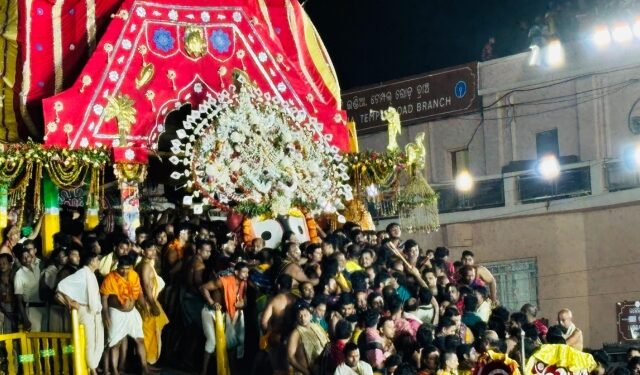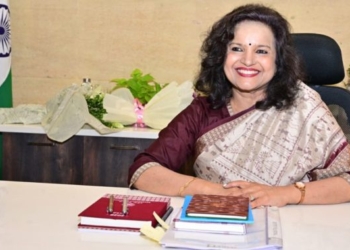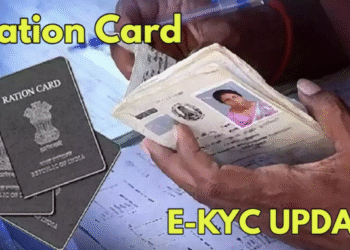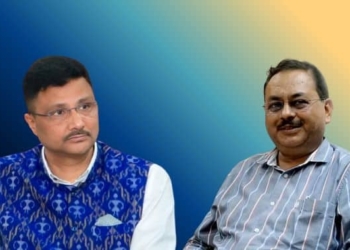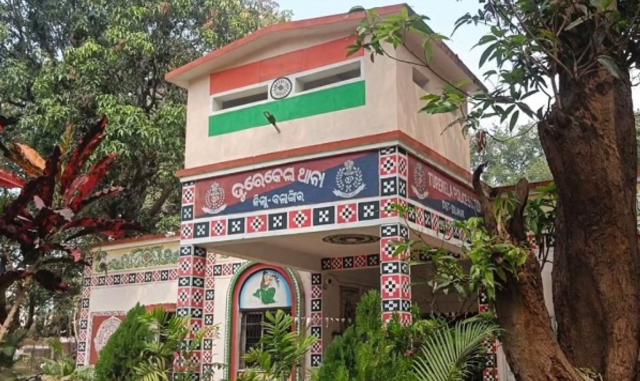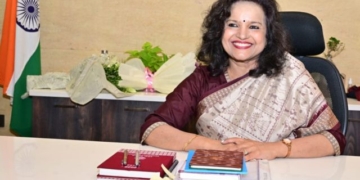The world-renowned Rath Yatra festival in Puri reached its grand conclusion on Tuesday with the spiritually vibrant Niladri Bije, the ceremonial return of Lord Jagannath, Lord Balabhadra, Devi Subhadra, and Sudarshan to the sanctum sanctorum of the Shri Jagannath Temple.
This sacred event, steeped in centuries-old traditions, saw the deities ascend the Ratna Simhasana after a 9-day-long sojourn.
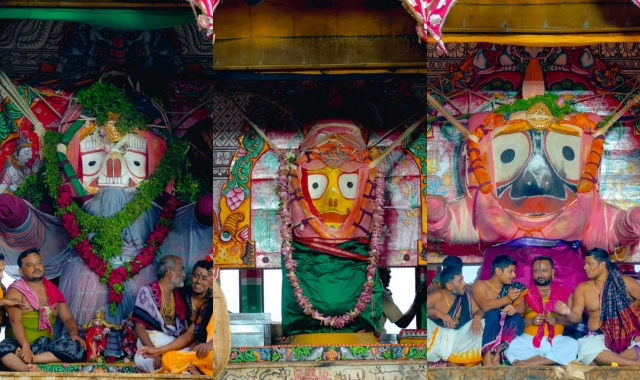
A Grand Procession and Divine Rituals
The Niladri Bije commenced with a series of meticulously performed rituals on the three chariots stationed outside the Srimandir. The day began at 6:50 AM with Mangal Alati, followed by Mailam (7:05–7:15 AM), Tadapa Lagi (7:10–7:30 AM), and Sakala Dhupa (10:25–11:00 AM). Evening rituals included Sandhya Alati (2:30–2:40 PM) and Sandhya Dhupa (2:55–3:30 PM), with the tying of Charamala (ladders) to the chariots from 3:45 to 6:30 PM.
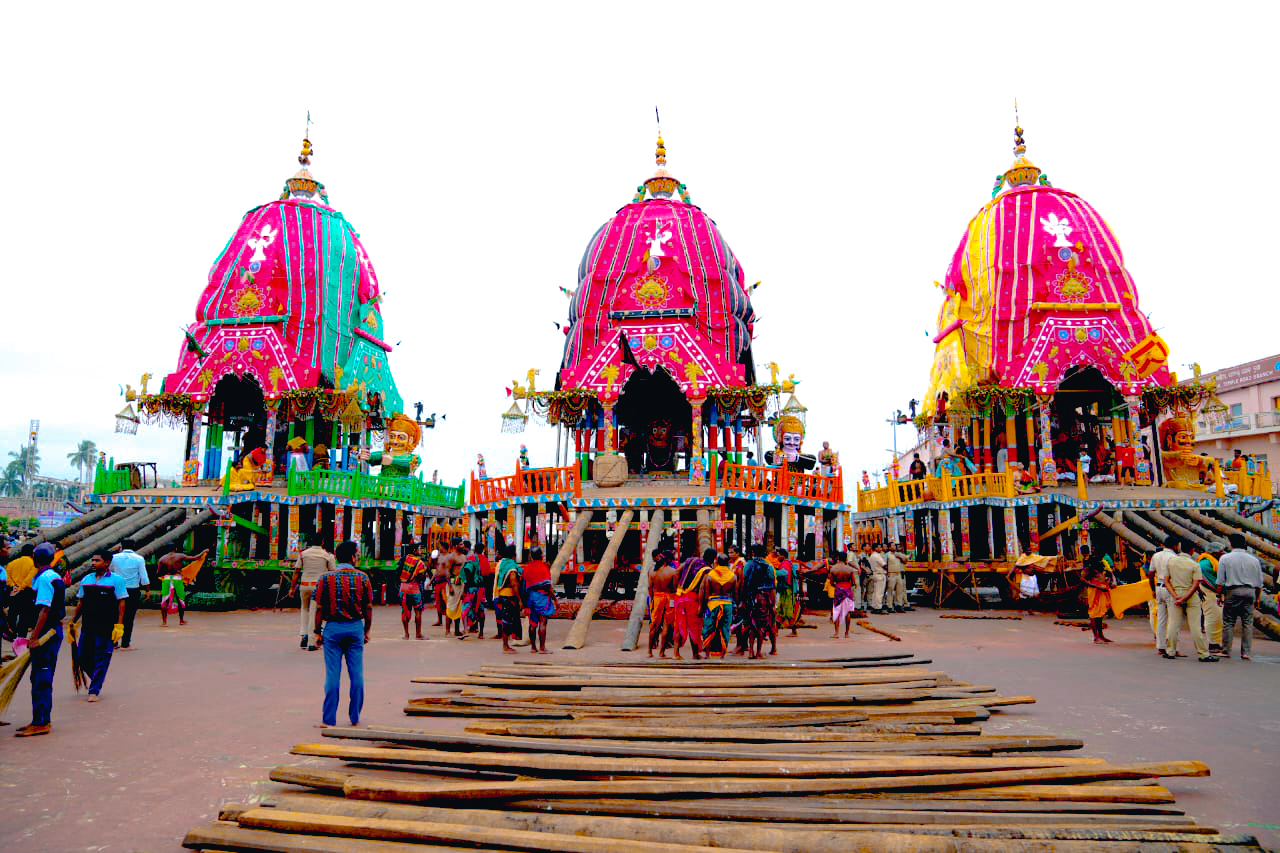
At 7:25 PM, the Goti Pahandi procession started, with the deities carried individually from the chariots to the temple. The procession adhered to a traditional order: Madana Mohan and Ramakrishna were first taken to the Dakshina Ghara, followed by Sudarshan, Lord Balabhadra, Devi Subhadra, and finally Lord Jagannath.
At the temple’s Suasari Deula and Jagamohan, rituals such as Banda Pana, Ghassa, and Bidia Manohi were conducted. The Ratna Simhasana was adorned with a canopy and an Akhanda Baitha (continuous lamp) to welcome the deities.
The Rasagola Offering: A Symbol of Divine Reconciliation
A defining moment of Niladri Bije is the offering of Rasagola, a ritual exclusive to this day. According to tradition, Lord Jagannath offers Rasagola to appease Goddess Lakshmi, who is believed to be displeased for not being included in the Rath Yatra. This ritual occurs at the Bhandar Ghar (storehouse) after a symbolic meeting at the Bheta Mandap, where Maa Lakshmi awaits Mahaprabhu Jagannath.
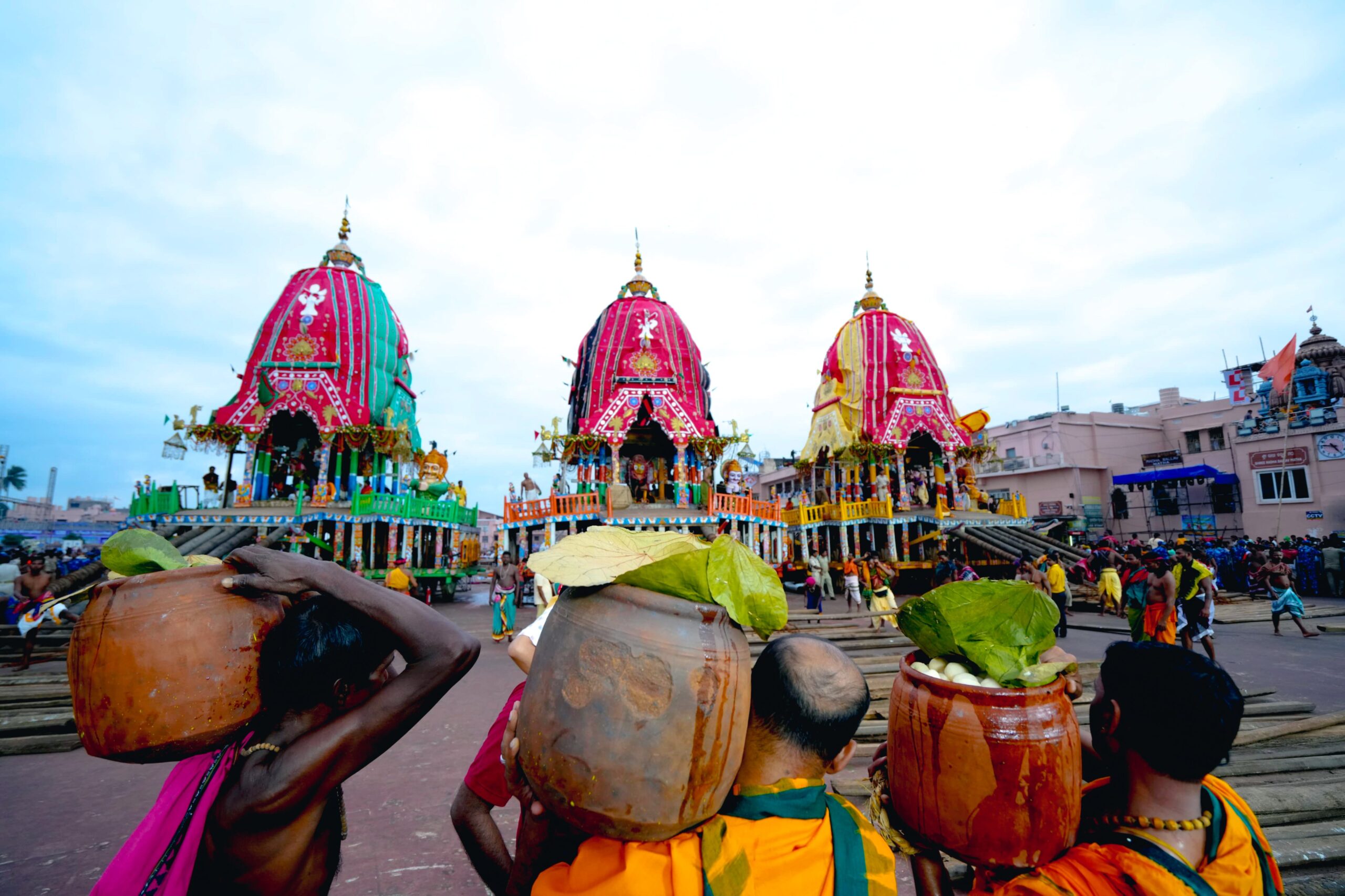
The Rasagola, prepared with utmost purity by the Bhitarachha Mahapatra in their household, is offered before Lord Jagannath ascends the Ratna Simhasana. The ritual is rooted in a divine narrative where a verbal exchange (Bachanika) takes place at the Jaya Bijaya Dwara, with a Devadasi representing Lakshmi and a Daitapati representing Jagannath. The door is briefly closed, symbolising Lakshmi’s initial displeasure, and reopened after the Rasagola offering, signifying reconciliation. Believed to date back to the 12th century, this tradition has cemented Rasagola’s place in Odisha’s spiritual and cultural heritage.
Rasagola Dibasa and Odisha’s Cultural Pride
Since 2016, Niladri Bije has been celebrated as Rasagola Dibasa, following a social media campaign launched on July 30, 2015, to highlight the sweet’s deep-rooted connection to Jagannath culture.
The day also celebrates Odisha’s successful claim to Rasagola’s origin, recognised with a Geographical Indication (GI) tag on July 29, 2019, after a friendly rivalry with West Bengal. Odia scholars assert that Rasagola has been integral to Jagannath traditions since the 12th century, making it a symbol of cultural pride and a beloved delicacy across Odisha.
Resumption of Nilachala Abhada
With the deities’ return to the Srimandir, the preparation of Mahaprasad resumed at the temple’s Anandabazar. On July 9, 2025, devotees will have access to the revered Nilachala Abhada, including the Chhappan Bhog (56 varieties of offerings), prepared after a 13-day hiatus. During the Rath Yatra, only dry offerings were made on the chariots, leaving devotees yearning for the temple’s sacred food.
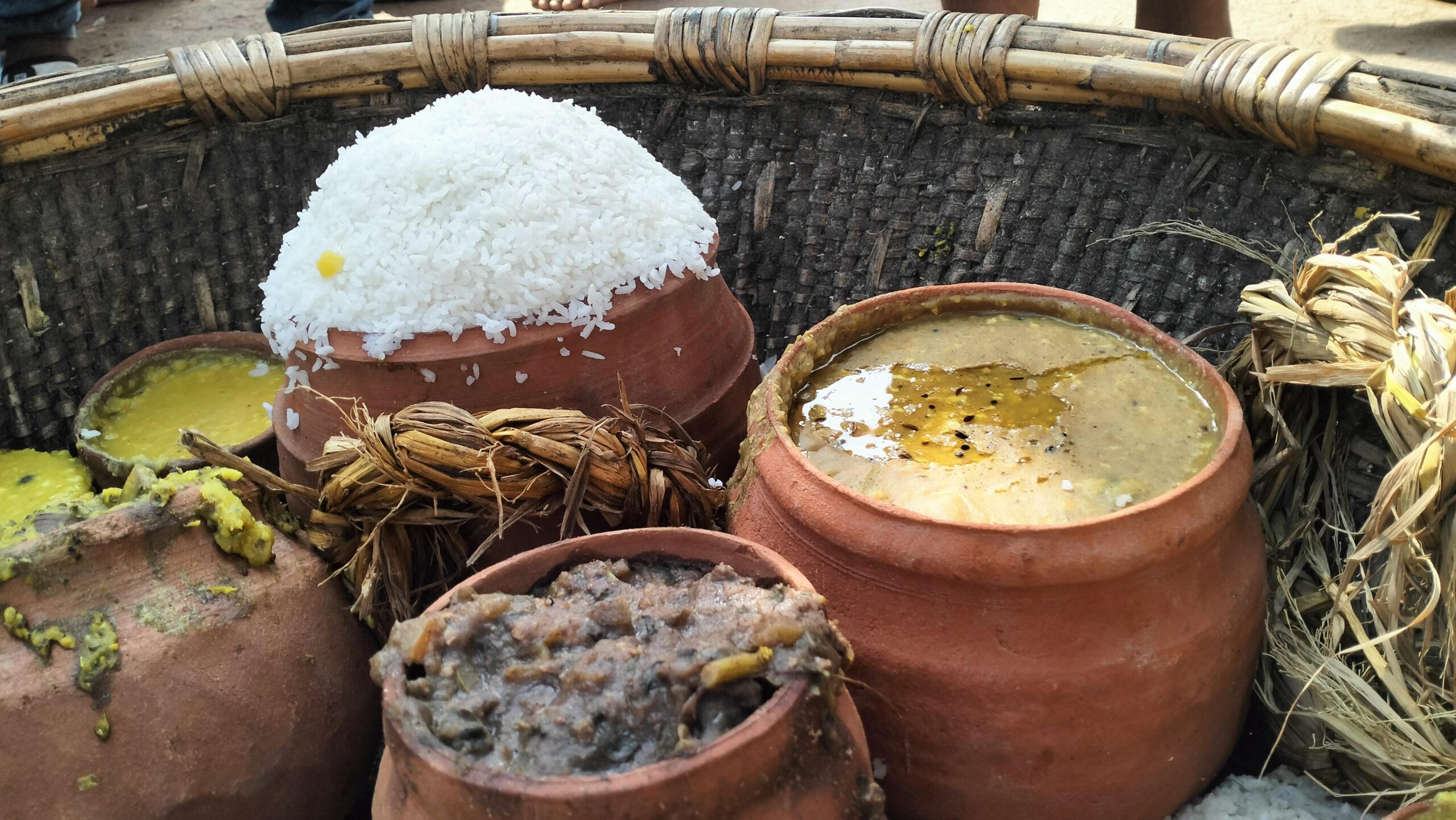
The resumption of Mahaprasad, crafted under the divine supervision of Goddess Mahalaxmi, is a significant moment, though its late-night availability often challenges devotees travelling from afar.
The Bheta Mandap and Historical Legacy
The Bheta Mandap, constructed during the reign of Dibya Singha Deba (1677–1716), served as the stage for the divine meeting between Lord Jagannath and Goddess Lakshmi. This architectural marvel, located in the temple’s kitchen precinct, symbolises the humanised divine interplay central to Jagannath culture.
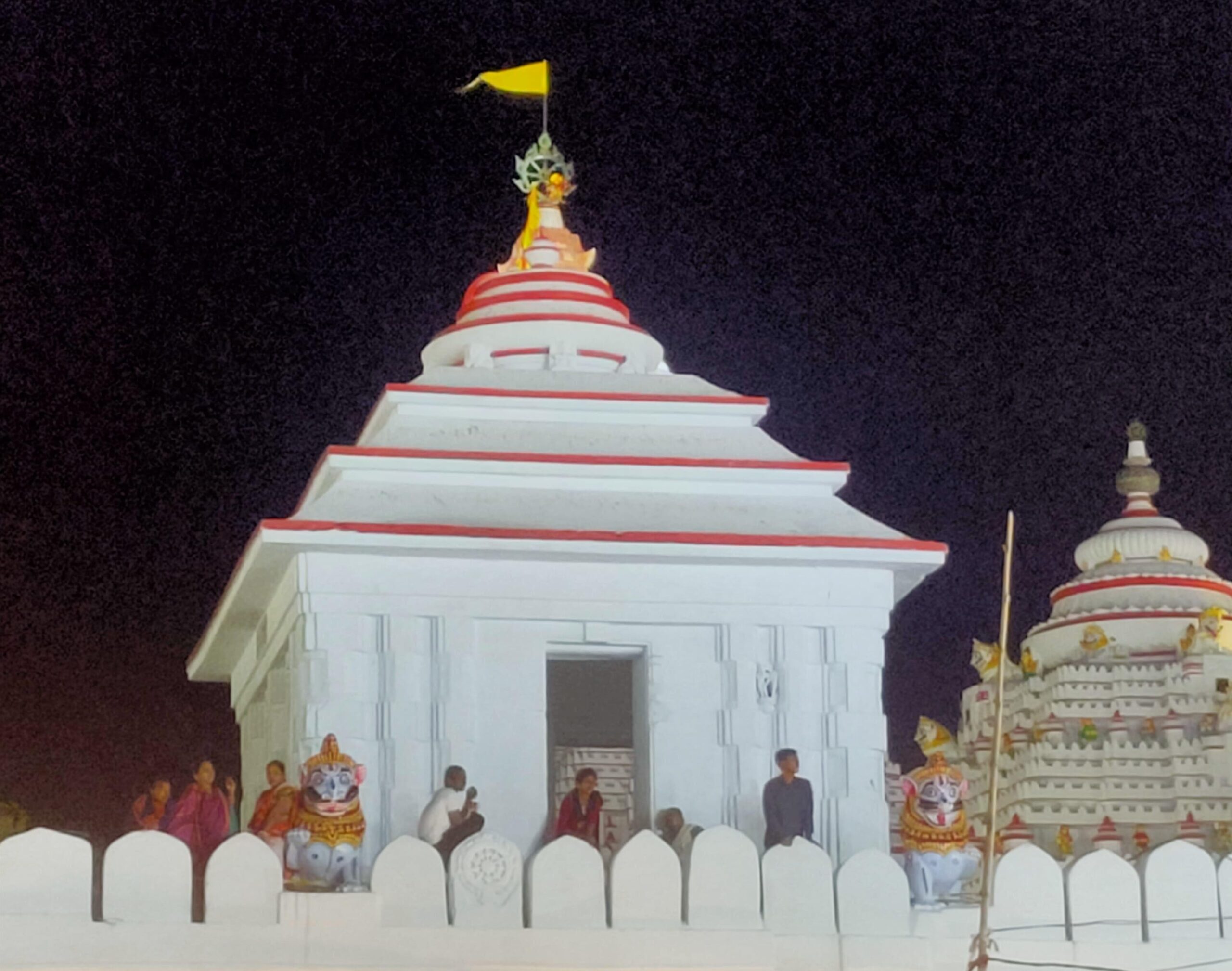
The Niladri Bije rituals, blending devotion, tradition, and cultural pride, mark the culmination of the Rath Yatra, drawing thousands of devotees to Puri to witness this sacred homecoming.
A Celebration of Faith and Tradition
Niladri Bije not only concludes the Rath Yatra but also showcases the rich tapestry of Odisha’s spiritual and cultural heritage. From the divine Rasagola offering to the resumption of Mahaprasad, the event encapsulates the essence of Jagannath culture, blending devotion with human-like divine narratives.
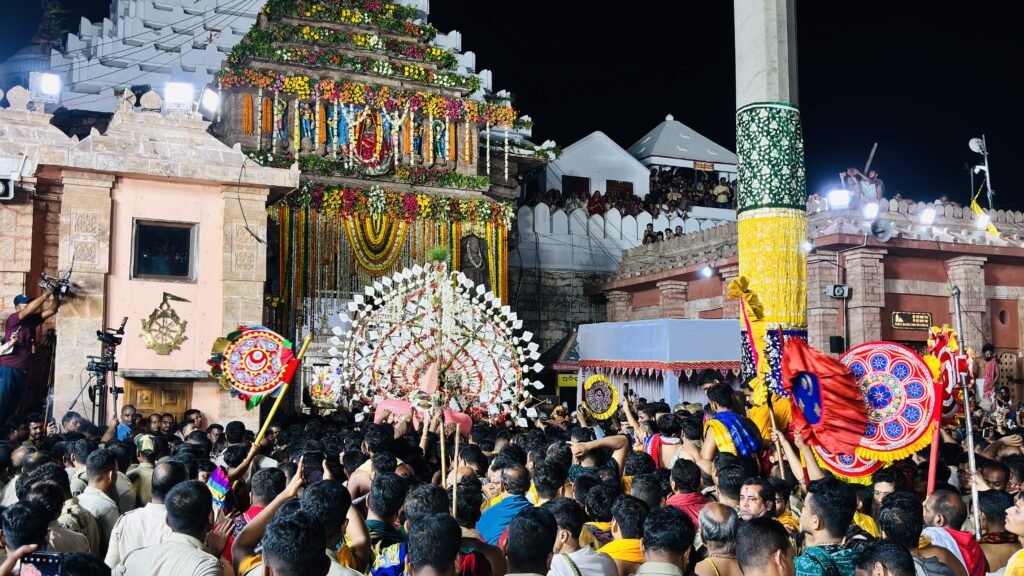
As Lord Jagannath and his siblings return to the Ratna Bedi from the Janma Bedi, the festival leaves devotees with a renewed sense of faith and cultural pride, reinforcing Puri’s status as a global spiritual hub.


